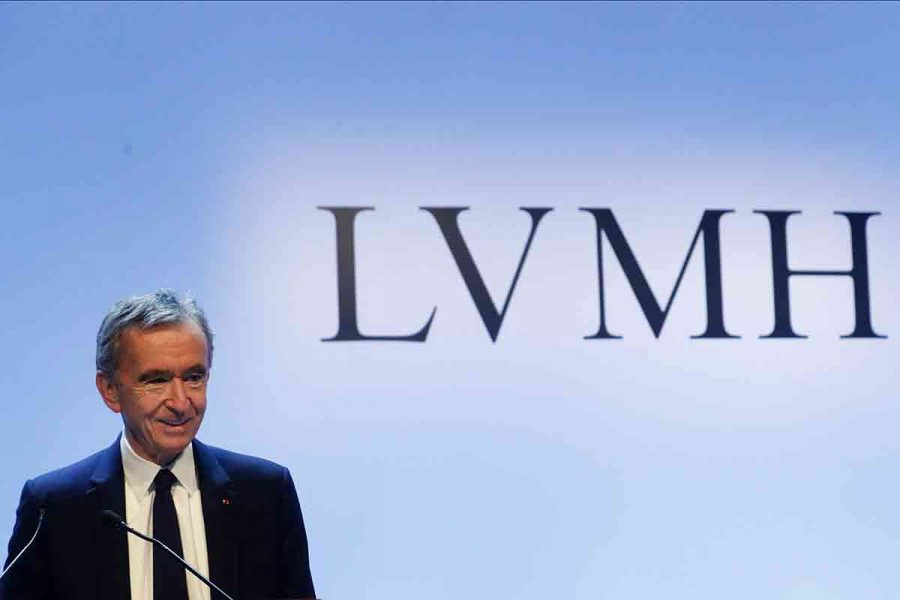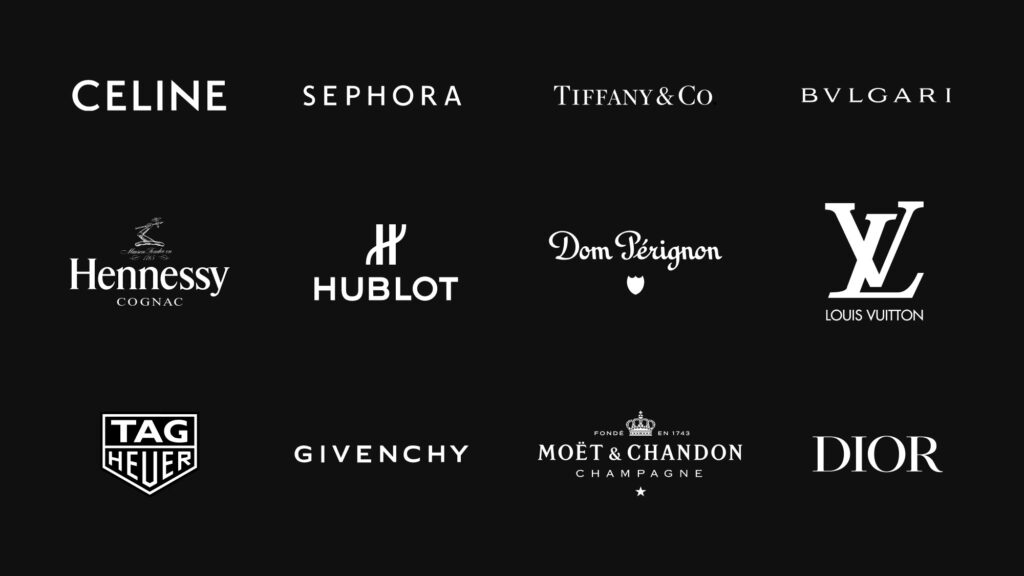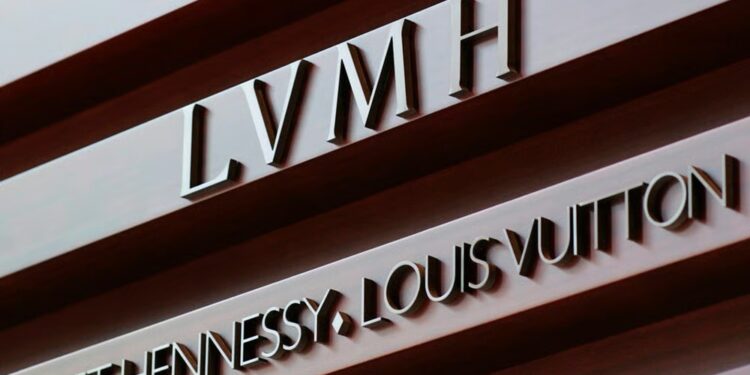After months of uncertainty and subdued performance, the world’s largest luxury group, LVMH Moët Hennessy Louis Vuitton, is staging a comeback. The company’s shares soared between 12% and 14% this week after reporting stronger-than-expected third-quarter results — a rally that has sent ripples of optimism across the entire luxury goods sector. For a conglomerate often seen as the barometer of global affluence, this marks not only a recovery but a signal that the industry’s long lull may finally be lifting.
Return to form
The key driver behind this resurgence lies in a long-awaited revival of demand from China, which accounts for roughly 28–30% of LVMH’s overall revenue. After more than a year of sluggish spending by Chinese consumers — dampened by a weak property market, youth unemployment, and travel restrictions — the tide is turning. Recent data suggests that Chinese luxury buyers are returning to domestic stores, bolstered by improving consumer sentiment and targeted government stimulus measures aimed at reigniting retail consumption.
The company’s rebound was broad-based. While the fashion and leather goods division, home to flagships Louis Vuitton, Dior, Fendi, and Loewe, posted a modest 2% decline, it marked a notable improvement from the double-digit drops of previous quarters. The selective retailing arm — which includes Sephora and DFS duty-free stores — was particularly robust, with double-digit growth in North America and steady recovery across Asia.
In contrast to the pandemic years, when LVMH’s performance leaned heavily on tourist spending, this recovery is being led by local consumers in both China and the United States. That shift signals a more sustainable path forward, less dependent on the cyclical patterns of global travel.

From a downturn to a reprise
Earlier in 2025, the mood around LVMH was markedly different. The stock had lost more than 20% of its value year-to-date by late spring, pressured by weak global demand, rising input costs, and cautious guidance. Analysts questioned whether the luxury boom of 2021–2023 had run its course. Moët Hennessy — the group’s wine and spirits division — was particularly affected, as younger consumers showed less enthusiasm for champagne and cognac, while high inventories weighed on margins.
The company’s operating performance had also come under scrutiny. Despite maintaining enviable gross margins, LVMH faced growing pressure from competitors like Hermès and Kering, whose niche positioning and exclusive strategies appeared to weather the downturn more effectively. Moreover, a stronger euro and uneven recovery in Europe and Japan compounded the challenge.
Now, the mood has changed. Investors are rewarding LVMH’s operational discipline and its ability to adapt to a shifting global landscape. The group has taken decisive measures to streamline costs, optimise its retail footprint, and reinforce its digital ecosystem. From an investor’s perspective, the appeal has become increasingly clear: with shares trading around 17 times forward earnings, LVMH is no longer priced for perfection, yet it retains the scale and brand equity that smaller peers can only envy.
Efficiency, margins and investor confidence
Several factors have converged to reignite confidence in LVMH. First, the company’s efficiency drive appears to be paying off. Supply chain costs have been reduced through improved logistics management, and marketing budgets have been rebalanced toward digital channels, where return on investment can be more precisely tracked.
Second, valuation metrics are turning heads. After the early-year correction, analysts now describe LVMH as “reasonably priced for a luxury blue chip.” Bernstein reaffirmed its Buy rating with a price target north of €600 per share, while Goldman Sachs highlighted the company’s “structural resilience” and “ability to compound earnings growth through diversification.”
The group’s diversification remains one of its core strengths. Beyond the flagship fashion houses, LVMH’s portfolio stretches across beauty (Sephora, Benefit, Make Up For Ever), watches and jewellery (Bulgari, TAG Heuer, Tiffany & Co.), and wines and spirits (Moët, Dom Pérignon, Hennessy). This breadth provides a natural hedge against downturns in any single category. When cognac shipments slow, Sephora’s expansion or Bulgari’s jewellery lines often pick up the slack.
A shifting consumer landscape
The luxury sector has long been sensitive to macroeconomic shifts and consumer psychology. The 2025 rebound at LVMH reflects deeper structural changes in how consumers engage with luxury. Younger demographics in China and the U.S. — often referred to as “affluent millennials” and “Gen Z aspirants” — are showing a renewed appetite for high-end goods, but with evolving values: sustainability, experience, and individuality now matter as much as logo visibility.
LVMH’s brands have pivoted accordingly. Dior’s latest campaigns emphasise craftsmanship and artistic collaboration, while Louis Vuitton’s new creative director, Pharrell Williams, has infused the label with cultural relevance and modern appeal. At the same time, LVMH’s investments in sustainability — such as traceable sourcing and reduced carbon operations — are beginning to resonate with these younger buyers, particularly in markets where luxury and ethics increasingly intertwine.
The company’s digital strategy also continues to evolve. With online luxury sales expected to account for 25% of the global total by 2027, LVMH has expanded its e-commerce capabilities, launched immersive digital experiences, and strengthened its partnerships with local platforms in Asia. Sephora’s online ecosystem is a standout example: a blend of e-commerce, influencer integration, and community-driven marketing that has helped the brand capture a significant share of the beauty market among younger consumers.
Challenges ahead
Still, the path forward is not without risk. The durability of China’s rebound remains the central question. Much of the recent demand appears to have been driven by promotional activity and pent-up spending, raising doubts about how sustainable it is once those effects fade. In the U.S., consumer sentiment remains fragile amid persistent inflation and high interest rates, which could weigh on discretionary spending in the months ahead.
There are also structural concerns. The global luxury sector faces growing scrutiny from regulators over pricing practices, environmental impact, and supply chain transparency. Meanwhile, shifts in wealth dynamics — particularly in the Middle East and Southeast Asia — are reshaping where growth will come from in the next decade. LVMH has been proactive in expanding into these regions, but execution risks remain high.
Input costs are another watchpoint. Luxury craftsmanship is inherently labour-intensive, and the cost of high-quality materials — leather, precious metals, gemstones — has risen steadily. While LVMH’s pricing power is formidable, the company will need to balance margin protection with customer retention, particularly in markets sensitive to price increases.

Rivalry and sector implications
The impact of LVMH’s comeback extends beyond its own balance sheet. Competitors are closely watching the group’s trajectory as a bellwether for the entire luxury landscape. Hermès, whose shares also rose on the back of LVMH’s results, continues to dominate the ultra-high-end segment, while Kering — owner of Gucci, Saint Laurent, and Bottega Veneta — is seeking its own rebound after management reshuffles and brand repositioning efforts. Richemont, Burberry, and Prada have likewise shown mixed results, underscoring the uneven nature of the recovery.
If LVMH’s momentum holds, it could reignite a broader re-rating of the sector, particularly among investors who had turned defensive amid concerns about a “luxury recession.” In that sense, LVMH’s success may serve as both a leading indicator and a psychological catalyst — restoring faith that premium consumption, though cyclical, remains resilient over the long term.
The global dimension
One of LVMH’s enduring strengths is its ability to operate as a truly global entity. The company’s geographic diversification — spanning Europe, Asia, North America, and the Middle East — enables it to weather regional downturns and capture emerging opportunities. In recent months, strong demand from the United States and steady growth in Japan and the Middle East have compensated for softness in Europe.
The Middle East, in particular, has become an important growth engine. As Gulf economies diversify and attract global talent, luxury retail spending has surged. LVMH’s recent investments in Dubai, Doha, and Riyadh — including flagship stores and regional offices — reflect the company’s long-term view of the region as both a consumer market and a brand showcase.
Similarly, LVMH’s presence in Africa is quietly expanding. While still a small contributor to revenue, markets like South Africa, Nigeria, and Morocco are seeing the emergence of a new affluent class eager to access global luxury brands. LVMH’s selective retailing model and targeted partnerships could prove decisive in capturing this frontier growth over the next decade.
Culture, craftsmanship and continuity
What ultimately differentiates LVMH is its mastery of continuity. While trends shift and economic cycles rise and fall, the group’s ethos — rooted in craftsmanship, heritage, and innovation — provides a durable foundation. Each maison operates with considerable autonomy, preserving identity and artisanal integrity, while benefiting from LVMH’s global resources and managerial expertise.
This balance between tradition and modernity is at the core of the company’s enduring appeal. Whether through Dior’s haute couture ateliers, Hennessy’s centuries-old cognac cellars, or Louis Vuitton’s collaborations with contemporary artists, LVMH continues to weave cultural narratives that transcend products.
For Bernard Arnault, the group’s long-time chairman and CEO, the latest turnaround is more than just a financial recovery; it’s a reaffirmation of LVMH’s central place in global culture. In a recent internal note, he reportedly emphasised “creativity, excellence, and discipline” as the guiding principles for the next phase of growth — words that resonate strongly after a period when even the most established luxury houses were forced to confront their vulnerabilities.
What to watch next
- Sustainability of the China rebound – The most immediate question is whether China’s recovery is cyclical or structural. LVMH will be closely monitoring indicators such as retail sales, travel patterns, and consumer confidence.
- Q4 performance and guidance for 2026 – The next set of quarterly results will be crucial in confirming whether this quarter’s performance represents a lasting shift or a temporary bounce.
- Competitive responses – Hermès, Kering, and Richemont will release their earnings over the coming weeks, offering further insight into whether the sector’s rebound is broad-based.
- Macroeconomic risks – Currency volatility, trade tensions, and inflationary pressures could reintroduce uncertainty, particularly in the U.S. and Europe.
- Margin management – Balancing cost control with brand investment will remain essential, especially as LVMH continues to expand its retail network and digital operations.
The broader view
LVMH’s resurgence is not just a corporate story; it’s a reflection of the resilience of global luxury consumption and the enduring power of brand aspiration. Even as the world faces geopolitical fragmentation and economic unevenness, the desire for craftsmanship, exclusivity, and cultural meaning persists.
In that sense, LVMH’s rebound offers a broader lesson: the luxury industry’s future lies not merely in selling products, but in cultivating emotional and cultural capital — something LVMH has mastered over decades.
As markets digest this week’s rally, the takeaway is clear: LVMH’s recovery appears genuine, built on solid fundamentals, renewed consumer energy, and the quiet strength of a company that never truly lost its way — it merely paused, recalibrated, and is now moving forward again with unmistakable confidence.
Newshub Editorial in Europe – 17 October 2025



Recent Comments